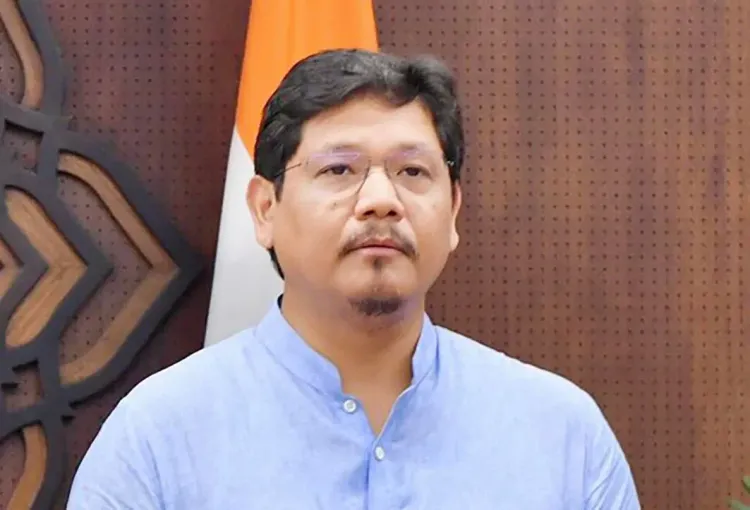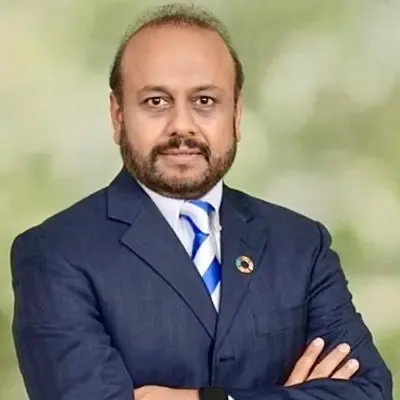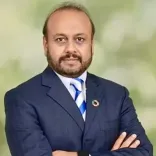How is Meghalaya Allocating 8.5% of Its Budget to Health?

Synopsis
Key Takeaways
- Meghalaya allocates over 8.5% of its budget to healthcare.
- Significant progress in reducing maternal mortality rates.
- New ICU facilities are being constructed to enhance critical care.
- Government support is focused on mission hospitals.
- Collaboration between public and private sectors is essential for healthcare equity.
Shillong, May 14 (NationPress) Meghalaya is allocating over 8.5 percent of its state budget to the healthcare sector, as stated by Chief Minister Conrad Sangma on Wednesday.
During an event, Sangma reaffirmed the government's dedication to enhancing healthcare services throughout the state. He emphasized that Meghalaya's healthcare spending exceeds 8.5 percent of its overall budget, making it the highest among all states in India.
This ongoing investment is yielding significant outcomes, particularly a greater than 45 percent decline in the maternal mortality rate, which has garnered attention both nationally and internationally.
The Chief Minister announced the release of 2 crore in development funds under the Meghalaya Healthcare Advancement Policy (MHAP) 2024 for Dr. H. Gordon Roberts Hospital in Shillong.
This initiative represents a major advancement in the state's goal to address critical healthcare deficiencies and support mission-operated hospitals that have long benefited the people of Meghalaya.
In his speech, the Chief Minister expressed appreciation for the contributions made by mission institutions.
“We are not here just for 2024. This is a long-term partnership. Your hospital can choose how to utilize these funds, whether for infrastructure, ICU equipment, or new facilities—it's yours to manage wisely,” he assured, promising continued annual support through MHAP.
The program was led by Rev. S.S. Majaw, Chairman of the Hospital Governing Board, and commenced with an opening prayer by Rev. K. Laloo, Secretary of the Central Organising Committee, followed by a welcoming address from Dr. Meban Aibor Kharkongor, a Consultant in Medicine.
Dr. Kenneth R.L. Nongpiur, Deputy Medical Superintendent, provided a detailed overview of MHAP-funded projects, including the construction of a new adult and pediatric ICU complex, the installation of a solar energy system for sustainable power, procurement of life-saving equipment, and the establishment of a skilled, multidisciplinary care team.
This project, estimated to cost Rs 2.95 crore, is set to be executed in four phases over 18–24 months, focusing on infrastructure enhancement, staff training, service delivery evaluation, and research.
A senior medical officer at the hospital highlighted that the new ICU complex will deliver affordable critical care services to newborns, children, and mothers, particularly from underserved and rural regions.
He emphasized the hospital's subsidized care model and noted that the Meghalaya Health Insurance Scheme (MHIS) and the Poor Patient Fund will be utilized to ensure that no patient is denied care due to financial constraints. He also stressed the need for healthcare equity through sustainable approaches.
A memorandum was presented to the Chief Minister by K.W. Marbaniang, Administrative Officer, outlining requests for additional financial assistance. These included funding for laser lithotripsy equipment for treating kidney and ureteral stones, ongoing support for constructing a new G+5 hospital building, and financial aid for expanding the College of Nursing's academic complex.
The Chief Minister acknowledged the requests and assured the hospital management of favorable consideration, reaffirming his government's support for mission hospitals across Meghalaya.
According to an official statement, the event marked a deepening collaboration between the government and the mission healthcare sector. It also highlighted the Chief Minister's vision for inclusive and accessible healthcare delivery, where both public and private sectors collaborate to reach those in need.










